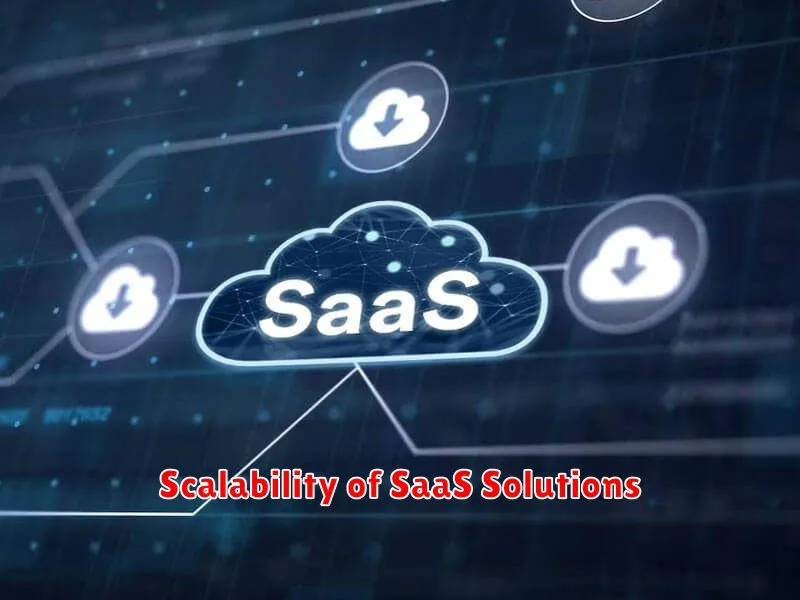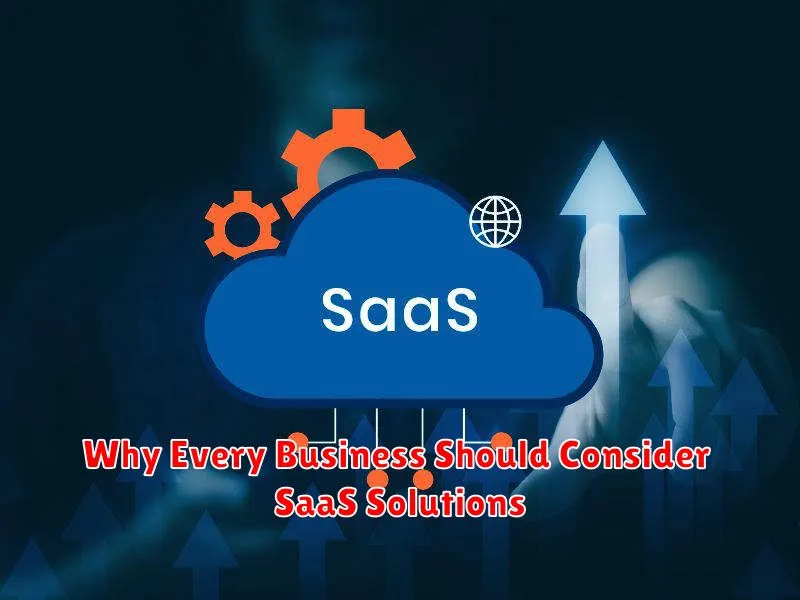In today’s rapidly evolving digital landscape, businesses face mounting pressure to enhance efficiency, reduce costs, and maintain a competitive edge. Software as a Service (SaaS) solutions have emerged as a transformative force, offering a compelling alternative to traditional software deployment models. SaaS provides businesses with scalable, flexible, and cost-effective access to a wide array of software applications, eliminating the need for hefty upfront investments and complex infrastructure management. This introductory article explores the compelling reasons why every business, regardless of size or industry, should seriously consider integrating SaaS solutions into their operations. By understanding the benefits of SaaS, organizations can unlock new opportunities for growth and innovation.
From streamlining operations and enhancing collaboration to improving data security and reducing IT overhead, the advantages of SaaS are numerous. Whether you’re a small startup or a large enterprise, SaaS offers a plethora of benefits that can help you achieve your business objectives. This article delves into the core reasons why adopting SaaS is no longer a luxury but a strategic necessity for businesses seeking to thrive in the modern business environment. We’ll explore how SaaS solutions can empower your workforce, drive innovation, and ultimately contribute to your bottom line.
Introduction to SaaS
Software as a Service (SaaS) is a modern software delivery model where applications are hosted by a provider and made available to users over the internet. This eliminates the need for businesses to install and maintain software on their own hardware, simplifying IT infrastructure and reducing upfront costs.
Key characteristics of SaaS include subscription-based pricing, automatic updates, and accessibility from any internet-connected device. SaaS solutions span a wide range of business functions, from customer relationship management (CRM) and enterprise resource planning (ERP) to communication tools and project management platforms.
Advantages Over Traditional Software
SaaS solutions offer several key advantages over traditional software deployments. Cost-effectiveness is a primary benefit, eliminating the need for large upfront investments in hardware and software licenses. Instead, businesses subscribe to a service, paying a recurring fee.
Accessibility is another significant advantage. Because SaaS applications are hosted in the cloud, they can be accessed from anywhere with an internet connection, promoting workforce flexibility and productivity. Scalability is also simplified, allowing businesses to easily adjust their usage as needed, avoiding costly infrastructure upgrades.
Maintenance and updates are handled by the SaaS provider, freeing up internal IT resources to focus on strategic initiatives. This also ensures that businesses are always running the latest version of the software, benefiting from the latest features and security patches.
Cost Efficiency and Budget Control
SaaS solutions offer significant advantages in terms of cost efficiency. By eliminating the need for extensive upfront hardware investments and ongoing maintenance costs, businesses can significantly reduce their IT spending.
The subscription-based model of SaaS allows for predictable budgeting and scalability. Companies can easily adjust their subscription plans based on their evolving needs, avoiding large capital expenditures and ensuring optimal resource allocation. This predictable cost structure simplifies financial planning and allows for better budget control.
Furthermore, SaaS solutions often include automatic updates and upgrades, eliminating the need for costly manual updates and ensuring businesses always have access to the latest features and security patches. This reduces internal IT workload and frees up valuable resources.
Scalability of SaaS Solutions

One of the most significant advantages of SaaS is its inherent scalability. Businesses can easily adjust their subscription levels to accommodate growth or downsizing, adding or removing users and features as needed. This eliminates the need for large upfront investments in hardware and software licenses, allowing businesses to scale their IT resources in a cost-effective manner.
SaaS providers manage the underlying infrastructure, handling the complexities of scaling servers and databases. This frees up internal IT teams to focus on strategic initiatives, rather than managing day-to-day IT operations.
Ease of Access and Maintenance
SaaS solutions excel in providing unparalleled ease of access and simplified maintenance. With cloud-based delivery, employees can access applications and data from virtually anywhere with an internet connection, boosting productivity and collaboration. This eliminates the need for complex VPN setups or being tethered to specific devices.
Maintenance is dramatically streamlined with SaaS. Providers handle all the backend infrastructure, including server upkeep, security updates, and software upgrades. This frees up internal IT resources to focus on strategic initiatives rather than routine maintenance tasks, ultimately reducing costs and improving efficiency.
Security Considerations with SaaS
While SaaS offers numerous advantages, security remains a critical consideration. Businesses must carefully evaluate the SaaS provider’s security measures.
Key areas to assess include data encryption, access controls, and compliance certifications (e.g., ISO 27001, SOC 2).
Understanding the provider’s data storage location, disaster recovery plan, and incident response procedures is also essential. Clear service level agreements (SLAs) regarding security are crucial.
Integration with Existing Systems
A key concern when adopting new software is its ability to integrate with existing systems. Seamless integration is crucial for maintaining business continuity and maximizing the value of existing technology investments. SaaS solutions often offer a variety of integration options, including APIs, pre-built connectors, and webhooks.
Evaluating the integration capabilities of a SaaS platform is essential. Businesses should consider the level of effort required for integration, the potential impact on existing workflows, and the availability of support resources. A well-integrated SaaS solution can streamline data flow, enhance productivity, and provide a unified view of business operations.
Popular SaaS Solutions for Businesses
Several SaaS solutions dominate the market, catering to a diverse range of business needs. Customer Relationship Management (CRM) platforms like Salesforce manage customer interactions and sales processes. Enterprise Resource Planning (ERP) systems such as NetSuite handle core business operations including finance and HR.
For communication and collaboration, Google Workspace and Microsoft 365 offer cloud-based productivity suites. Marketing automation platforms like HubSpot streamline marketing efforts. Cloud storage services including Dropbox and Google Drive provide secure file access and sharing.
Evaluating SaaS Providers
Choosing the right SaaS provider is crucial for maximizing benefits and minimizing risks. Thorough evaluation is essential. Consider these key factors:
Key Evaluation Criteria
- Security: Data protection is paramount. Evaluate the provider’s security measures, certifications, and compliance standards.
- Reliability and Uptime: Consistent service availability is critical. Assess the provider’s uptime guarantees and disaster recovery plans.
- Scalability: Choose a solution that can grow with your business needs. Ensure the provider can handle increased users and data volumes.
- Integration: Seamless integration with existing systems is often necessary. Verify compatibility with your current software infrastructure.
- Cost: Evaluate pricing models, subscription options, and potential hidden costs. Compare different providers to find the best value.
Future of SaaS in Business

The future of SaaS is marked by continuous innovation and expanding capabilities. AI and machine learning will play increasingly crucial roles, automating tasks and providing predictive analytics.
Vertical SaaS solutions, tailored for specific industries, will become more prevalent, offering specialized functionalities. Furthermore, the integration of SaaS with other technologies like IoT and blockchain will unlock new possibilities and efficiencies.
Expect a continued shift towards mobile-first SaaS applications and a greater emphasis on security and data privacy as businesses increasingly rely on cloud-based services.

